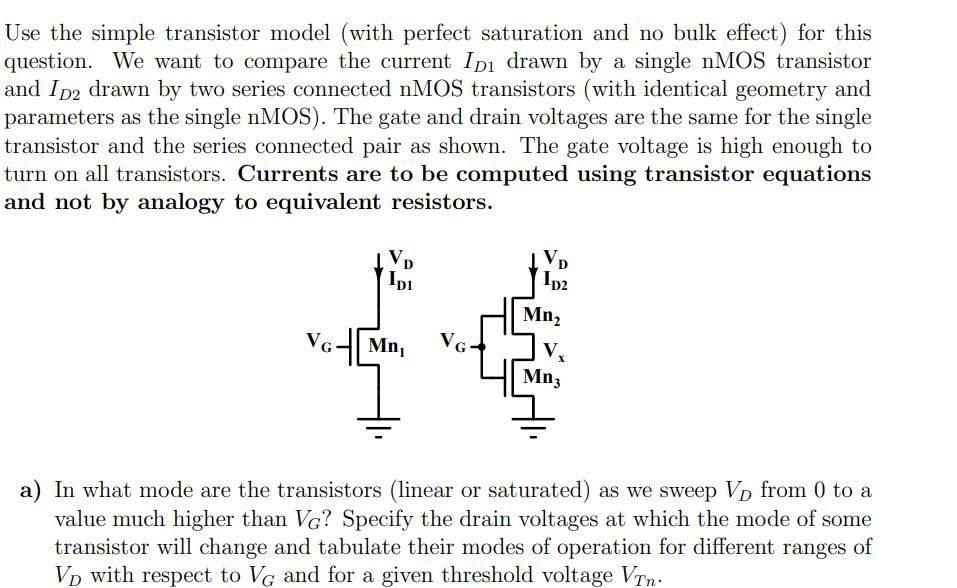Use the simple transistor model (with perfect saturation and no bulk effect) for this question. We want to compare the current ID drawn by


![]()
Use the simple transistor model (with perfect saturation and no bulk effect) for this question. We want to compare the current ID drawn by a single nMOS transistor and ID2 drawn by two series connected nMOS transistors (with identical geometry and parameters as the single nMOS). The gate and drain voltages are the same for the single transistor and the series connected pair as shown. The gate voltage is high enough to turn on all transistors. Currents are to be computed using transistor equations and not by analogy to equivalent resistors. VD IDI Mn VD ID2 Mn Vx Mn3 a) In what mode are the transistors (linear or saturated) as we sweep VD from 0 to a value much higher than VG? Specify the drain voltages at which the mode of some transistor will change and tabulate their modes of operation for different ranges of VD with respect to VG and for a given threshold voltage VTn. b) Derive expressions for the voltage V, at the source of Mn and drain of Mn3 for all combinations of modes of Mn and Mn3 in terms of VD, VG and VTn. If VG = 2.4V and VT=0.4V, tabulate values of V for VD = 1.0V, 1.5V, 2.0V, 2.5V and 3.0V. c) Find the ratio ID1/ID2 for all combinations of modes of Mn, Mn and Mn3.
Step by Step Solution
3.33 Rating (144 Votes )
There are 3 Steps involved in it
Step: 1
The detailed ...
See step-by-step solutions with expert insights and AI powered tools for academic success
Step: 2

Step: 3

Ace Your Homework with AI
Get the answers you need in no time with our AI-driven, step-by-step assistance
Get Started


